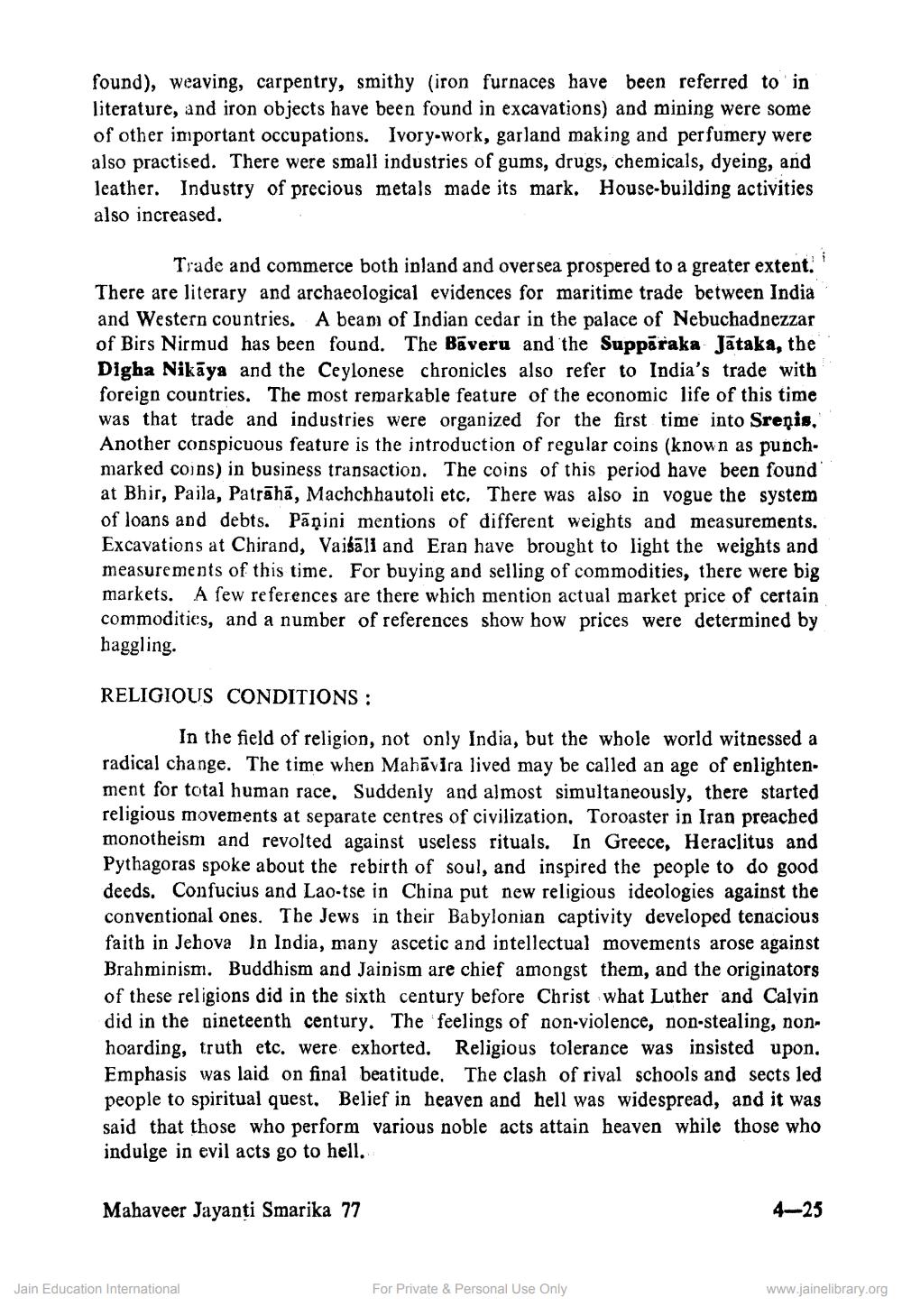________________
found), weaving, carpentry, smithy (iron furnaces have been referred to in literature, and iron objects have been found in excavations) and mining were some of other important occupations. Ivory-work, garland making and perfumery were also practised. There were small industries of gums, drugs, chemicals, dyeing, and leather. Industry of precious metals made its mark. House-building activities also increased.
Trade and commerce both inland and oversea prospered to a greater extent. There are literary and archaeological evidences for maritime trade between India and Western countries. A beam of Indian cedar in the palace of Nebuchadnezzar of Birs Nirmud has been found. The Baveru and the Supparaka Jātaka, the Digha Nikaya and the Ceylonese chronicles also refer to India's trade with foreign countries. The most remarkable feature of the economic life of this time was that trade and industries were organized for the first time into Sreņis, Another conspicuous feature is the introduction of regular coins (known as punchmarked coins) in business transaction. The coins of this period have been found at Bhir, Paila, Patraha, Machchhautoli etc. There was also in vogue the system of loans and debts. Panini mentions of different weights and measurements. Excavations at Chirand, Vaisall and Eran have brought to light the weights and measurements of this time. For buying and selling of commodities, there were big markets. A few references are there which mention actual market price of certain commodities, and a number of references show how prices were determined by haggling.
RELIGIOUS CONDITIONS:
In the field of religion, not only India, but the whole world witnessed a radical change. The time when Mahavira lived may be called an age of enlightenment for total human race. Suddenly and almost simultaneously, there started religious movements at separate centres of civilization. Toroaster in Iran preached monotheism and revolted against useless rituals. In Greece, Heraclitus and Pythagoras spoke about the rebirth of soul, and inspired the people to do good deeds. Confucius and Lao-tse in China put new religious ideologies against the conventional ones. The Jews in their Babylonian captivity developed tenacious faith in Jehova In India, many ascetic and intellectual movements arose against Brahminism. Buddhism and Jainism are chief amongst them, and the originators of these religions did in the sixth century before Christ what Luther and Calvin did in the nineteenth century. The feelings of non-violence, non-stealing, nonhoarding, truth etc. were exhorted. Religious tolerance was insisted upon. Emphasis was laid on final beatitude. The clash of rival schools and sects led people to spiritual quest. Belief in heaven and hell was widespread, and it was said that those who perform various noble acts attain heaven while those who indulge in evil acts go to hell.
Mahaveer Jayanti Smarika 77
Jain Education International
For Private & Personal Use Only
4-25
www.jainelibrary.org




